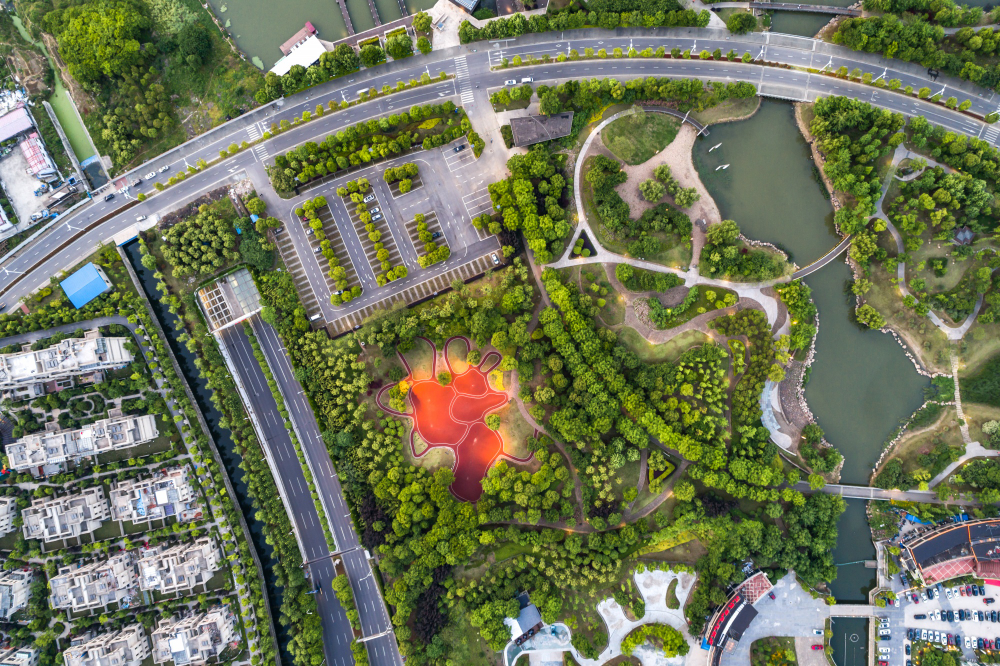Creating the Perfect Urban Landscape with Placemaking
- October 12, 2023
- 3 min

Urban development goes beyond just constructing buildings, roads, and infrastructure. It’s about fashioning places that captivate the heart, places where memories are forged. Placemaking stands tall as a defining element in urban design. This approach leans heavily on workshop services, which form a nexus where communities, designers, planners, and diverse stakeholders converge. These workshop services champion the cause of co-creating spaces that mirror a collective dream.
So, whether you’re steering a community, planning a city, or simply having a penchant for meaningful urban areas, delving into placemaking through the lens of workshop services can revolutionize your perspective on urban development. This piece dives into the intricate tapestry of placemaking, shedding light on the art of creating remarkable urban spaces.
The Heart of Placemaking
At its core, placemaking is about creating memorable, functional, and community-centric spaces. But how does one achieve that? Here’s where workshop services come into play. Workshop services offer platforms for stakeholders to come together, discuss, brainstorm, and collectively craft designs that cater to their vision and needs.
The Role of Workshop Services
- Community Involvement: Workshop services allow members of the community to voice their ideas and concerns. This not only ensures that designs are in line with the community’s aspirations but also fosters a sense of ownership.
- Collaboration: Bringing together city planners, architects, designers, and residents, workshop services create an environment for diverse inputs. Such collaborations often result in innovative solutions that cater to various aspects of urban design.
- Iterative Process: Workshop services also provide a space for continuous feedback. As designs evolve, they can be refined and adjusted, ensuring that the final output is both effective and aesthetically pleasing.
Designing for People
In the bustling environment of modern cities, the human touch is paramount. Here are some considerations to keep in mind:
- Accessibility: Ensure that spaces are accessible to all, regardless of age, ability, or socioeconomic status.
- Functionality: While aesthetics are important, the utility should never be compromised. Ensure that spaces serve the purpose they’re designed for.
- Flexibility: Urban designs should be adaptable. As cities evolve, spaces should have the flexibility to serve multiple purposes or adapt to changing needs.
- Safety: This is paramount. Incorporate designs that promote safety both during the day and at night.
The Importance of Green Spaces
Green spaces are the heartbeats of a city. They breathe life into the urban jungle and are essential components of placemaking. Without green spaces, our cities would be sterile, lacking in vitality and spirit.
Acting as the city’s lungs, these spaces offer a breath of fresh air. Amidst the hustle and bustle, they stand as quiet corners where residents can take a moment, relax, and feel the grass beneath their feet. With the constant hum of urban life, the gentle rustling of leaves or the soft chirping of birds can be a soothing balm to the senses.
Workshop services in urban space recognize this vital aspect of urban planning. Time and again, they emphasize the need to integrate green areas into city designs. Why? Because the benefits are plenty and undeniable:
- Health Benefits: A walk in the park isn’t just a phrase; it’s therapy. Being surrounded by greenery boosts our mood. It reduces anxiety and stress. Numerous studies show that people living near green spaces report better mental health and well-being.
- Environmental Advantages: Cities can get hot, really hot. Concrete structures and roads often trap heat. But green spaces? They cool things down. They combat the urban heat island effect. But that’s not all. They filter pollutants, improving air quality. They offer a habitat for birds, insects, and small animals, promoting biodiversity. In essence, they ensure our cities remain livable.
- Social Interaction: Ever noticed how parks draw people together? Children playing, families picnicking, or friends chatting on a bench. Green spaces become the community’s living room. They foster bonds, create memories, and build a sense of community.
The Future of Placemaking
With rapid urbanization, the importance of placemaking cannot be stressed enough. It will be central to ensuring that cities remain livable, sustainable, and people-centric. Workshop services will undoubtedly play a pivotal role in this, offering platforms for dialogue, collaboration, and innovation.
Conclusion
Crafting urban designs through the lens of placemaking is about more than just aesthetics. It’s about creating spaces that resonate, spaces that invite, and spaces that nurture. With the increasing emphasis on sustainable and people-centric urbanization, the role of workshop services in shaping our cities will only grow in significance. As we move forward, let’s remember that the true measure of a city’s greatness lies not in its towering skyscrapers or sprawling infrastructures, but in the happiness and well-being of its residents. Here’s to crafting cities that inspire, uplift, and truly feel like home.
Read More:
About Phil Myrick
Phil Myrick is an advisor to planning and development projects around the world and former CEO of Project for Public Spaces. Phil applies research into how people interact with their environments and each other to create vibrant places, destinations, districts, and developments. His strategic advice has helped his clients achieve their goals of attracting people, engaging people in their community, strengthening connections and social fabric, and stimulating economic development. Phil is married with two teenagers and struggles to satisfy his passion for being outdoors or on the water. https://philmyrick.com
